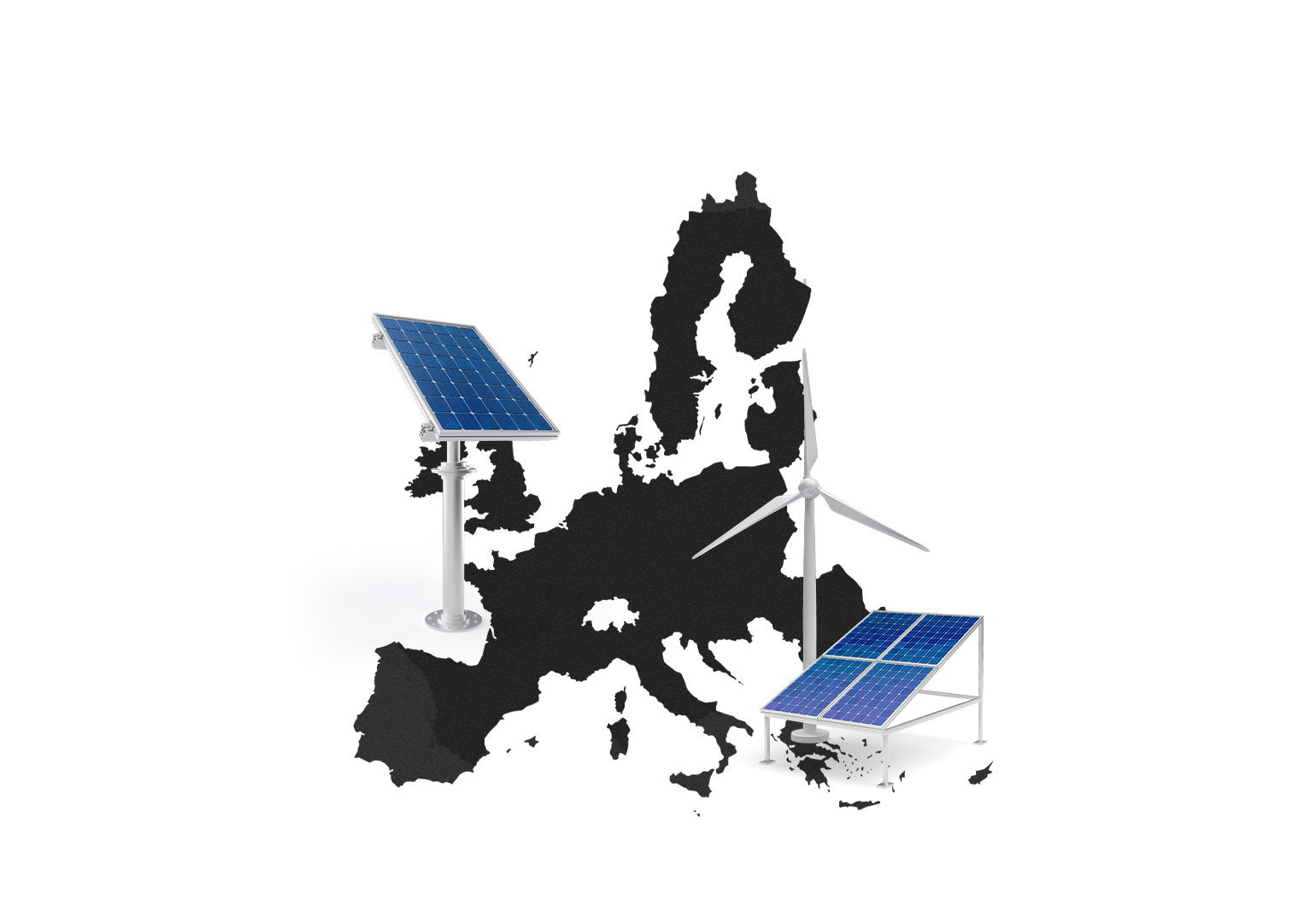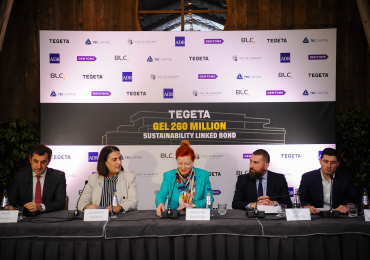Salome Janelidze, Board Member of the Energy Training Center of GNERC speaks about development opportunities and challenges of renewable energy: “The decisive role of renewable energy in the fight against global warming determines the priority of its uptake for the world. Along with the “Paris Agreement”, the mobilization of states is also attributable to the energy crisis which rocked the world in 2022 and led to the acceleration of actions for the uptake of renewable energy. The International Energy Agency (IEA) forecasts a 75% increase in installed renewable energy capacity worldwide between 2022 and 2027, which translates into the construction of nearly 2,400 gigawatts of new generation facilities. The share of renewable energy is steadily increasing in the European Union, where the share of “green” energy in total consumption was up to 22% in 2022. Additionally, last year, for the first time, capital expenditure on wind and solar generation assets exceeded investments in new and existing gas and oil fields.
With the wide spread of renewable energy production technologies, related costs and the Levelized Cost of Energy are significantly decreasing. According to the International Renewable Energy Agency (IRENA), the cost of solar photovoltaic modules has decreased by almost 90% compared to 2009, and the price of wind turbines has decreased by 49-78% compared to 2010. In addition, the marginal cost of producing solar or wind power is zero: the sun shines for free, and the wind blows for free, making green energy production even more attractive to investors. On the other hand, states are also interested in the availability of clean and cheap energy. That is why subsidizing renewable energy is an established practice around the world. However, in order to ensure stability and sustainability of renewable generation, it is necessary to have a properly balanced regulatory framework.
The penetration of renewable energy is related to the so-called “renewables cannibalization” effect that leads to a decrease in the price of electricity for both green and traditional energy producers and makes additional investments in electricity production uneconomical. According to European regulations, renewable energy producers are given priority access to the electricity grid, which implies the guarantee that the producer connected to the grid will be able to sell the produced electricity at any time and ensure its transportation in accordance with the established rules. In addition, the price on electricity exchanges is determined by the point of intersection of the aggregated supply and demand curves: the market price is determined by the highest-priced electricity needed to meet the demand in the relevant hour. Such, in many cases, is electricity produced by natural gas. On the supply curve, renewable energy producers displace fossil fuel producers, who have higher marginal costs, and as a result, the single, equilibrium market price falls. The “cannibalization” effect is even more obvious when the increase in the penetration of renewable energy in the system is accompanied by a decrease in electricity consumption, which is the expected result of the systemic measures taken by the states to promote energy efficiency.
Although the reduced wholesale price of electricity can be seen as a positive development in the short term, in the long term it presents a challenge: as a result of “renewables cannibalization”, the capture price and rate, metrics used to determine income for electricity producers, decrease. To attract investors to the sector, it is necessary to mobilize even more subsidies, which are usually reflected in the end user bills. In addition, renewable energy investments tend to flow to regions where more subsidies are available. As the concentration of solar and wind energy in the electric grid increases, so does the need for baseload power plants, which in turn receive capacity maintenance compensation.
The effect of “renewable cannibalization” increases with the penetration of renewable energy. According to the widespread opinion, as the competitiveness of renewable energy increases, their financial support by the state should terminate. For this purpose, negative auctions of renewable energy are also used in several European countries. In July of this year, the winners of the auction held in Germany – BP and TotalEnergies – paid 12.6 billion euros for the construction of a total of 7 gigawatts of offshore wind farms. However, this is unlikely to solve the problem. The main means of making a profit for electricity producers is through trading on the exchange, and with a high concentration of renewable energy with zero variable costs, the market price is reduced. This also affects the risks related to the project, which, in turn, increases capital costs and deters investors. It is worth noting that in the recent auction for the construction of an offshore wind farm in Britain, no winner emerged – large investors refused to participate because they believed that the maximum price of the auction was too low to make a profit.
To eliminate the effect of “renewables cannibalization “, a complex approach is needed. One way is to use electricity storage systems, which will store the electricity produced by solar and wind energy and supply it to the electricity system during periods of peak consumption. In addition, it is important to use demand management measures to reduce electricity consumption during peak periods. According to research carried out by the Oxford Energy Institute, a carbon tax could be imposed on fossil fuel power producers to reduce the “cannibalization” effect. In such a case, the marginal cost of electricity produced by fossil fuels will increase, leading to higher revenues for renewable producers during peak hours. The development of a green hydrogen economy is also considered as a means of mitigating the “cannibalization” effect.
The uptake of solar and wind energy in Georgia is still in the early stages, therefore, today there is no risk of the “renewables cannibalization” effect. At the end of last year, an important step was taken by the Government of Georgia by developing the rules for the auction of renewable energy capacity, based on which the first successful auction was already held. With the development of green energy, in order to avoid the “cannibalization” effect and to attract new investments, it will be necessary to define a flexible and sustainable regulatory framework to maintain a balanced and stable system and energy markets”.











